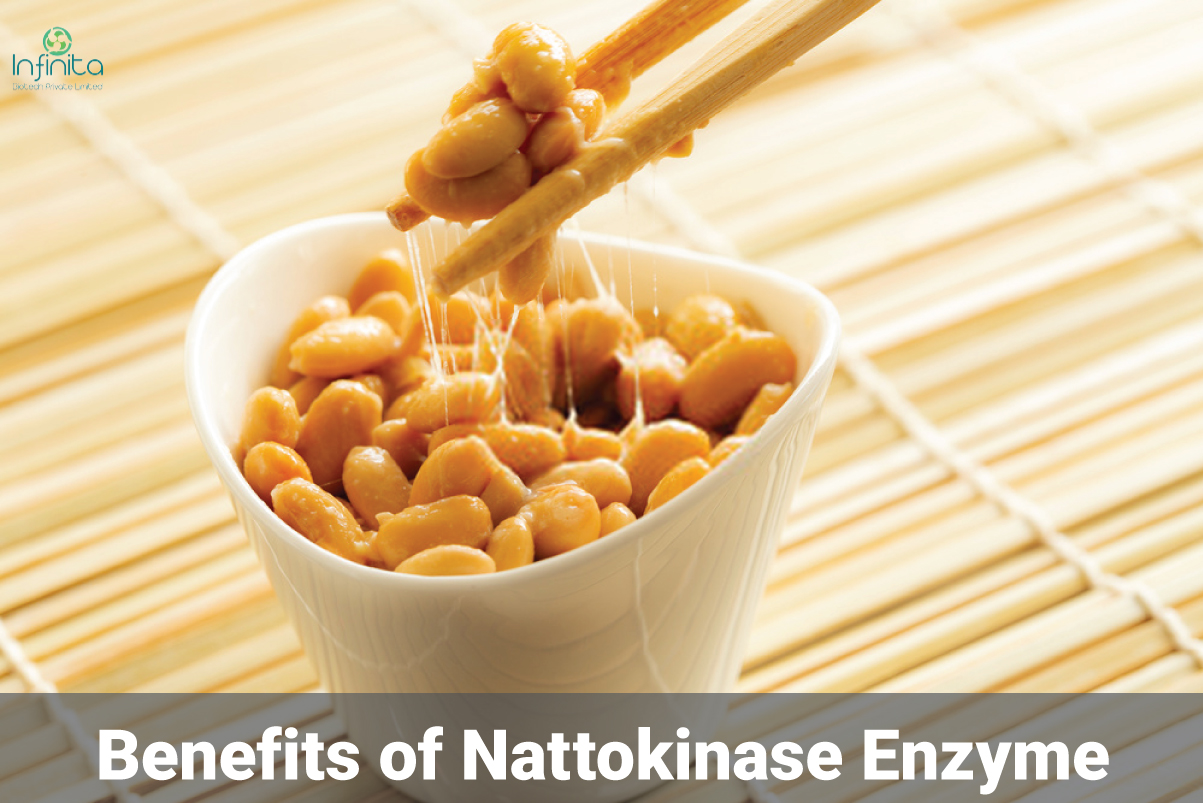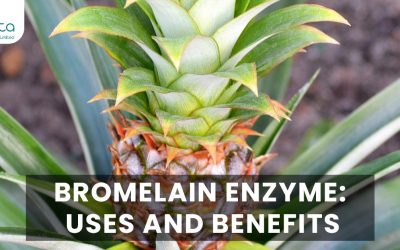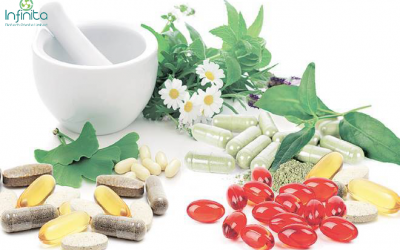
Benefits Of Nattokinase Enzyme
4 Key-Benefits Of Nattokinase Enzyme
Abstract
As per the World Health Organization [WHO], out of all the factors responsible for an individual’s ill-health about 60 percent of the factors responsible for the ill conditions are purportedly correlated to the individual’s lifestyle. In today’s time, that is driven by ideals of power, success and the struggle for the attainment of the two aforementioned, there is no working your way around encountering poor lifestyles. Lifestyle in its broadest sense could be referred to the characteristics of individuals inhabiting a particular geographical landmass, economy or following an indigenous culture which includes day-to-day functioning and behavioural patterns, job(s), activity, diet, etc.
Billions of people around the world are engaged in living an unhealthy lifestyle; some are living a sedentary life that doesn’t require them to use much of their motor abilities whereas others burn themselves up simply to cope with growing economies and their trends. While the ones labouring in the grey areas of the society who are choicelessly exerting themselves on a daily-basis already suffer a variety of ailments the one living a sedentary lifestyle aren’t doing fairly well either. At some point, most people, by default feel inclined towards jobs that require them to work from a desk or be seated for long hours. Being stationary for long hours results in poor circulation of blood. When our muscles don’t contract like it does while engaging in any physical activity which is what exhibits circulation, our blood tends to develop granules.
This is the result of an enzymatic reaction from Thrombin, a member of the peptidase family also denoted by the enzyme entry EC 3.4.21.5, is responsible for clotting blood. While it may seem dreadful at first, the clotting process is necessary as its absence would render a person dead due to excessive loss of blood even in scenarios involving superficial cuts. Thrombin turns soluble glycoprotein like fibrinogen [factor I], which is known to be a blood-constituent in vertebrates and converts it to fibrin [non-dissolvable protein] which gradually clots blood vessels and capillaries and thereby inhibit excessive bleeding, however, in the cases of dysfunctional fibrinogens or acquired human fibrinogen-related disorders the clotting process tends to pose as an attribute to a group of clinically critical cardiovascular conditions like thrombosis which furthermore leads to heart diseases, pathological bleeding, high blood pressure, varicose veins stroke, Deep Vein Thrombosis [DVT], Atherosclerosis, Peripheral Artery Disease [PAD], etc.
Introduction
Like all enzymes, Nattokinase enzyme is a macromolecular bio-catalyst that is responsible for speeding-up a chemical reaction or one may even call it an assisting agent that ensures breaking down of complex, saturated molecular structure, in this case, the insoluble protein variant we already know to be fibrin. The nattokinase enzyme is extracted from a traditional Japanese delicacy known as Nattō that is acquired by fermenting this specific kind of soybeans with the bacteria, Bacillus subtilis. At first, the enzyme procured from Nattō was thought to be an enzyme of the kinase family thus the name Nattokinase, however, Nattokinase is a serine protease belonging to the subtilis class and it is used for its fibrinolytic properties that reduce the risk of cardiovascular diseases by preventing thrombus formation and subsequent blood clotting.
Nattō has been prevailing as a remedy for cardiovascular diseases for over centuries in Japanese culture and as a matter of fact, there is no other soy-based food other than Nattō that contains Nattokinase enzyme, however, the enzyme was first clinically identified by Dr Hiroyuki Sumi in the year 1980, at the University of Chicago. At that time as a student at the university studying and researching on conventional drugs that could be used for disintegrating thrombus, Sumi ended up experimenting with Nattō which he purportedly introduced to a blood clot or thrombus. To his surprise, the clot had begun disintegration and within an 18-hour span, the thrombus had been completely dissolved, which was a much shorter reaction time compared to the other drugs he was working with.
Although, the most common debate over its application has forever been focused on its fibrinolytic potential which is what breaks down fibrin clots atherosclerotic plaque, a condition of surging fibrin levels is another concern that elevates in becoming risk factors that contribute to cardiovascular diseases in fact, researchers have come to a consensus that there is a higher possibility of association between cardiovascular deaths and fibrinogen levels/thrombus deposits than the cholesterol factor.
Benefits Of Nattokinase Enzyme
Treats Deep Vein Thrombosis [DVT]
By now we’ve come to understand that blood clotting is a serious condition in which a fibrin-based thrombus moves like unrefined petrol that is ultimately bound to result in sludge deposits which furthermore inhibits function, performance and decreases the life expectancy of a vehicle likewise excessive thrombus levels escalates into a serious condition called Deep Vein Thrombosis [DVT], which is serious because there is always a risk of veinal blood clots breaking loose into the bloodstream and depositing on our lungs, inhibiting blood flow which can cause pulmonary embolism. Nattokinase ensures dissolution of excess fibrin in the blood vessels. This helps reduce the risk of severe clotting, resulting in improved blood circulation and healthier blood vessel walls.
Improves pressure regulation of the vascular system
Nattokinase enzyme is also known to improve blood pressure conditions. As per a study, Nattokinase was proven to possess the ability to optimize blood vessel-health and positively regulating blood pressure by reducing blood viscosity levels. However, its use is more subjective to people with high blood pressure conditions.
Improves clinical conditions: varicose veins, clotting-related numbness
In cases of prolonged conditions that would require a person to stay bed-ridden like after a surgery, paralysis, injury, limited mobility can result in blood clotting conditions like varicose veins, or other thrombus-related conditions that are mostly caused in the legs which manifests as symptoms like numbness in the leg, cramps, dull skin on the legs, etc. Most commonly known reason contributing to the development of these conditions is the lifestyle most people adopt. For example, people working in offices or other industry verticals that demand being seated for long hours like a commercial airlines’ pilot who is expected to keep up with the to and fro that comes with the job. Sitting still for long hours means there is no muscle movement which normally exhibits blood circulation. In human beings, the calf muscle is the most densely structured tissues in the body which is functional only when an individual is in motion. Calves, on contraction unveil tremendous scope for pumping blood in your legs and feet, however, due to the lifestyle we lead that involves no scope for exercising, Nattokinase proves to be an easy way out through the pain to a point where one can begin to make lifestyle changes and incorporate mild exercises in their daily routine.
Post-Pregnancy therapy and women’s health
Pregnancy is a time when a woman’s body is experiencing the most complex chemical reactions and hormonal activities which is a conversation for another time. However, the idea that life is putting itself together with a human body, forming bones, skeletal structures, gene code, organs and neurological pathways that put the “unfathomable number of stars in the universe” to shame, it is safe to say that embryo or seed germination/formation is by far the most complex and significant phenomena where thrombus deposition is inarguably a red flag. Hormonal activities itself in general increases the chance of fibrin deposits or blood clots, however, the later stages of pregnancy results in increased pressure on blood vessels around the pelvis and legs which further aggravates into blood clots and can even extend up to six weeks after giving birth. Nattokinase helps this condition by thinning the blood while also targeting the fibrin clots, easing pressure on the wall-linings of blood vessels, however, it is recommended that Nattokinase be avoided during pregnancy due to its ability to thin the blood which can cause excessive bleeding and prove as a complication while delivering the baby.
NATTOKINASE
It can be used as a blood thinner.

Improves
Blood Flow

Reduces Strain
On Heart

Improves Varicose
Veins
Related Articles
Bromelain Enzyme: Uses and Benefits
Bromelain is a combination of enzymes present in the pulp and stem part of the Pineapple Plant or Ananas comosus. Bromelain, which is rich in dietary fibre, is a proteolytic enzyme that falls in the category of enzymes that assist in protein digestion. Bromelain...
Nutraceutical Enzymes And Their Benefits
It is common knowledge that humans have always identified natural products as the main source of nutrition. Dietary requirements have always been the point of focus when it comes to nutrition. It is also interesting to note that the field of biomedicals has found out...

Benefits Of Nattokinase Enzyme
4 Key-Benefits Of Nattokinase Enzyme
Abstract
As per the World Health Organization [WHO], out of all the factors responsible for an individual’s ill-health about 60 percent of the factors responsible for the ill conditions are purportedly correlated to the individual’s lifestyle. In today’s time, that is driven by ideals of power, success and the struggle for the attainment of the two aforementioned, there is no working your way around encountering poor lifestyles. Lifestyle in its broadest sense could be referred to the characteristics of individuals inhabiting a particular geographical landmass, economy or following an indigenous culture which includes day-to-day functioning and behavioural patterns, job(s), activity, diet, etc.
Billions of people around the world are engaged in living an unhealthy lifestyle; some are living a sedentary life that doesn’t require them to use much of their motor abilities whereas others burn themselves up simply to cope with growing economies and their trends. While the ones labouring in the grey areas of the society who are choicelessly exerting themselves on a daily-basis already suffer a variety of ailments the one living a sedentary lifestyle aren’t doing fairly well either. At some point, most people, by default feel inclined towards jobs that require them to work from a desk or be seated for long hours. Being stationary for long hours results in poor circulation of blood. When our muscles don’t contract like it does while engaging in any physical activity which is what exhibits circulation, our blood tends to develop granules.
This is the result of an enzymatic reaction from Thrombin, a member of the peptidase family also denoted by the enzyme entry EC 3.4.21.5, is responsible for clotting blood. While it may seem dreadful at first, the clotting process is necessary as its absence would render a person dead due to excessive loss of blood even in scenarios involving superficial cuts. Thrombin turns soluble glycoprotein like fibrinogen [factor I], which is known to be a blood-constituent in vertebrates and converts it to fibrin [non-dissolvable protein] which gradually clots blood vessels and capillaries and thereby inhibit excessive bleeding, however, in the cases of dysfunctional fibrinogens or acquired human fibrinogen-related disorders the clotting process tends to pose as an attribute to a group of clinically critical cardiovascular conditions like thrombosis which furthermore leads to heart diseases, pathological bleeding, high blood pressure, varicose veins stroke, Deep Vein Thrombosis [DVT], Atherosclerosis, Peripheral Artery Disease [PAD], etc.
Introduction
Like all enzymes, Nattokinase enzyme is a macromolecular bio-catalyst that is responsible for speeding-up a chemical reaction or one may even call it an assisting agent that ensures breaking down of complex, saturated molecular structure, in this case, the insoluble protein variant we already know to be fibrin. The nattokinase enzyme is extracted from a traditional Japanese delicacy known as Nattō that is acquired by fermenting this specific kind of soybeans with the bacteria, Bacillus subtilis. At first, the enzyme procured from Nattō was thought to be an enzyme of the kinase family thus the name Nattokinase, however, Nattokinase is a serine protease belonging to the subtilis class and it is used for its fibrinolytic properties that reduce the risk of cardiovascular diseases by preventing thrombus formation and subsequent blood clotting.
Nattō has been prevailing as a remedy for cardiovascular diseases for over centuries in Japanese culture and as a matter of fact, there is no other soy-based food other than Nattō that contains Nattokinase enzyme, however, the enzyme was first clinically identified by Dr Hiroyuki Sumi in the year 1980, at the University of Chicago. At that time as a student at the university studying and researching on conventional drugs that could be used for disintegrating thrombus, Sumi ended up experimenting with Nattō which he purportedly introduced to a blood clot or thrombus. To his surprise, the clot had begun disintegration and within an 18-hour span, the thrombus had been completely dissolved, which was a much shorter reaction time compared to the other drugs he was working with.
Although, the most common debate over its application has forever been focused on its fibrinolytic potential which is what breaks down fibrin clots atherosclerotic plaque, a condition of surging fibrin levels is another concern that elevates in becoming risk factors that contribute to cardiovascular diseases in fact, researchers have come to a consensus that there is a higher possibility of association between cardiovascular deaths and fibrinogen levels/thrombus deposits than the cholesterol factor.
Benefits Of Nattokinase Enzyme
Treats Deep Vein Thrombosis [DVT]
By now we’ve come to understand that blood clotting is a serious condition in which a fibrin-based thrombus moves like unrefined petrol that is ultimately bound to result in sludge deposits which furthermore inhibits function, performance and decreases the life expectancy of a vehicle likewise excessive thrombus levels escalates into a serious condition called Deep Vein Thrombosis [DVT], which is serious because there is always a risk of veinal blood clots breaking loose into the bloodstream and depositing on our lungs, inhibiting blood flow which can cause pulmonary embolism. Nattokinase ensures dissolution of excess fibrin in the blood vessels. This helps reduce the risk of severe clotting, resulting in improved blood circulation and healthier blood vessel walls.
Improves pressure regulation of the vascular system
Nattokinase enzyme is also known to improve blood pressure conditions. As per a study, Nattokinase was proven to possess the ability to optimize blood vessel-health and positively regulating blood pressure by reducing blood viscosity levels. However, its use is more subjective to people with high blood pressure conditions.
Improves clinical conditions: varicose veins, clotting-related numbness
In cases of prolonged conditions that would require a person to stay bed-ridden like after a surgery, paralysis, injury, limited mobility can result in blood clotting conditions like varicose veins, or other thrombus-related conditions that are mostly caused in the legs which manifests as symptoms like numbness in the leg, cramps, dull skin on the legs, etc. Most commonly known reason contributing to the development of these conditions is the lifestyle most people adopt. For example, people working in offices or other industry verticals that demand being seated for long hours like a commercial airlines’ pilot who is expected to keep up with the to and fro that comes with the job. Sitting still for long hours means there is no muscle movement which normally exhibits blood circulation. In human beings, the calf muscle is the most densely structured tissues in the body which is functional only when an individual is in motion. Calves, on contraction unveil tremendous scope for pumping blood in your legs and feet, however, due to the lifestyle we lead that involves no scope for exercising, Nattokinase proves to be an easy way out through the pain to a point where one can begin to make lifestyle changes and incorporate mild exercises in their daily routine.
Post-Pregnancy therapy and women’s health
Pregnancy is a time when a woman’s body is experiencing the most complex chemical reactions and hormonal activities which is a conversation for another time. However, the idea that life is putting itself together with a human body, forming bones, skeletal structures, gene code, organs and neurological pathways that put the “unfathomable number of stars in the universe” to shame, it is safe to say that embryo or seed germination/formation is by far the most complex and significant phenomena where thrombus deposition is inarguably a red flag. Hormonal activities itself in general increases the chance of fibrin deposits or blood clots, however, the later stages of pregnancy results in increased pressure on blood vessels around the pelvis and legs which further aggravates into blood clots and can even extend up to six weeks after giving birth. Nattokinase helps this condition by thinning the blood while also targeting the fibrin clots, easing pressure on the wall-linings of blood vessels, however, it is recommended that Nattokinase be avoided during pregnancy due to its ability to thin the blood which can cause excessive bleeding and prove as a complication while delivering the baby.
0 Comments
Submit a Comment
You must be logged in to post a comment.
NATTOKINASE
It can be used as a blood thinner.

Improves Blood Flow

Reduces Strain On Heart

Improves Varicose Veins
Bromelain Enzyme: Uses and Benefits
Bromelain is a combination of enzymes present in the pulp and stem part of the Pineapple Plant or Ananas comosus. Bromelain, which is rich in dietary fibre, is a proteolytic enzyme that falls in the category of enzymes that assist in protein digestion. Bromelain...
Nutraceutical Enzymes And Their Benefits
It is common knowledge that humans have always identified natural products as the main source of nutrition. Dietary requirements have always been the point of focus when it comes to nutrition. It is also interesting to note that the field of biomedicals has found out...
Nattokinase Enzymes And Their Benefits
Nattokinase refers to a completely natural enzyme found in Natto and is the synonym of a soy-based food of Japan. This particular enzyme is produced through fermentation by a bacterium named “Bacillus subtilis.” It’s been widely recognized that consuming Natto is...




0 Comments